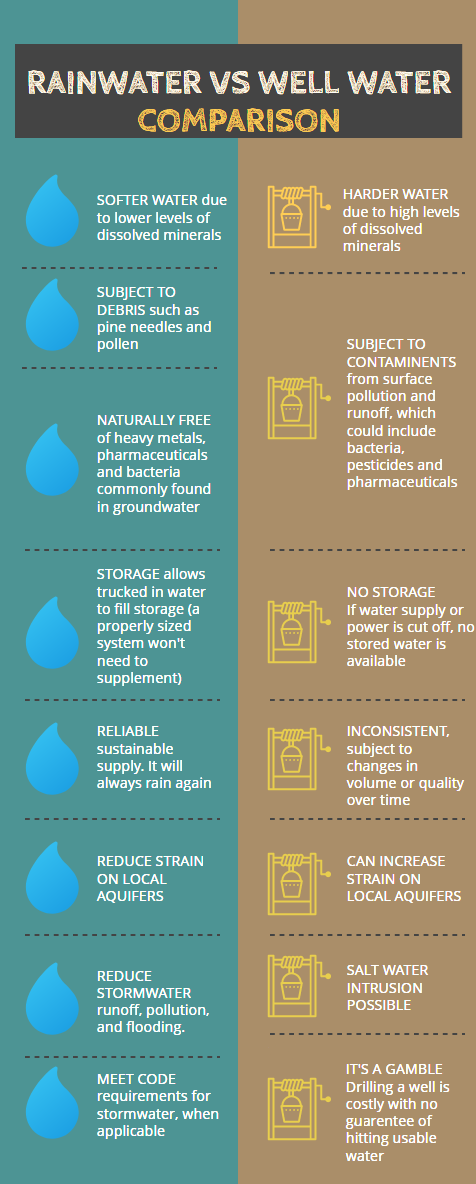Benefits of Collecting Rain Water
Problems of Water
All over the country there are issues and risks surrounding water. Stormwater runoff from impervious surfaces increases the risk of environmental degradation, damage to buildings and infrastructure from flooding, and creating headaches for people dealing with drainage issues. Harvesting and managing the rainwater that falls on impervious surfaces on-site can be a solution for many of the water issues communities and individuals are facing.
Environmental Benefits
Low Impact Development (LID) and managing stormwater onsite is the means of mimicking the natural hydrologic functioning of the area being developed. Implementing rainwater harvesting with other LID strategies can greatly reduce the overall stormwater footprint and demand on off-site fresh water resources.
Economic Benefits
Using the rainwater flowing from the roof can reduce the water one would otherwise pay for directly from a water purveyor, or in maintenance and installation costs of a treated well. Treating rainwater to supplement or function as the sole source of water can be less expensive then well water.
Water Quantity/Quality
Rainwater harvesting and stormwater management target the two leading factors contributing to water issues throughout the world: water quality and water quantity. Rainwater harvesting has become a means for reducing the demand on tapped, or low quality, water supplies while encouraging conservation.
Reduce Infrastructure Loss
Harvesting and using rainwater on-site reduces the volume and thus wear and tear on municipal water and stormwater infrastructure. If every home used rainwater for just toilet flushing, it would vastly reduce the demand on water infrastructure and slow rising costs of collecting, treating, then pumping the water we pee in!
Societal Benefits
Using landscape features and promoting natural hydrologic functioning with ones land feels good. The ideals of self reliance and environmental stewardship guiding rainwater harvesting can help deliver a sense of efficacy to the solutions for water issues. Managing and using rainwater on-site reduces potential pollutants or excessive water from flowing to the neighbors, or critical water bodies.
Reduce Disaster Risk
People rely on a network of functioning infrastructure systems in the United States. Whether it is turning the faucet to supply fresh water, flicking on light switches at night, or driving down the road to get to the grocery store or hospital, infrastructure is a necessity for society. When hazards occur and those infrastructure systems are disrupted, communities are at risk to disaster. Rainwater harvesting can improve self-reliance and emergency preparedness when water infrastructure is disrupted.
How Much Can I Collect?
1" of rain on 1,000 sq ft. = 600 gallons collected
The average individual uses anywhere from 60 to 80 gallons of water a day. However, more than 50% of indoor water use is for non-potable purposes such as flushing toilets and washing machines.
So...why do we use treated water pumped from off-site to flush toilets?
What can I use my rain water for?
Use rainwater for non-potable uses like toilet flushing, washing machines, washing cars, irrigation, or as an emergency water source.Or use rainwater to supply potable water to your entire home or business.

